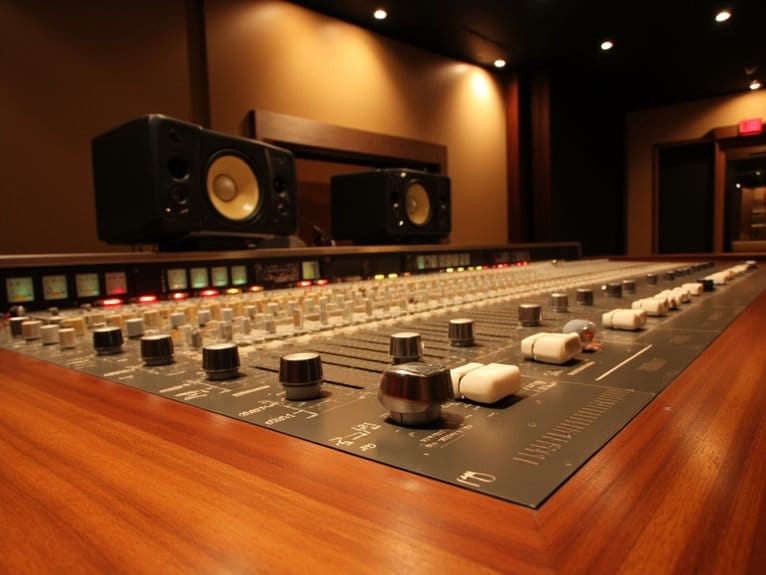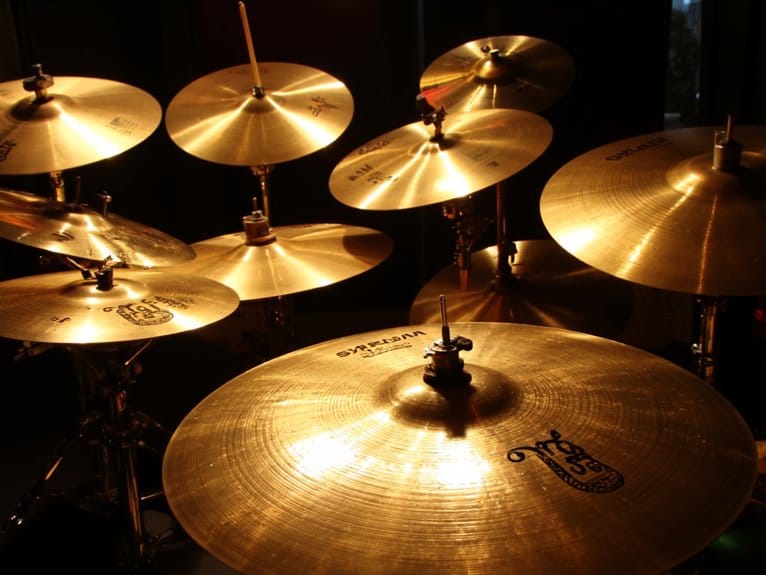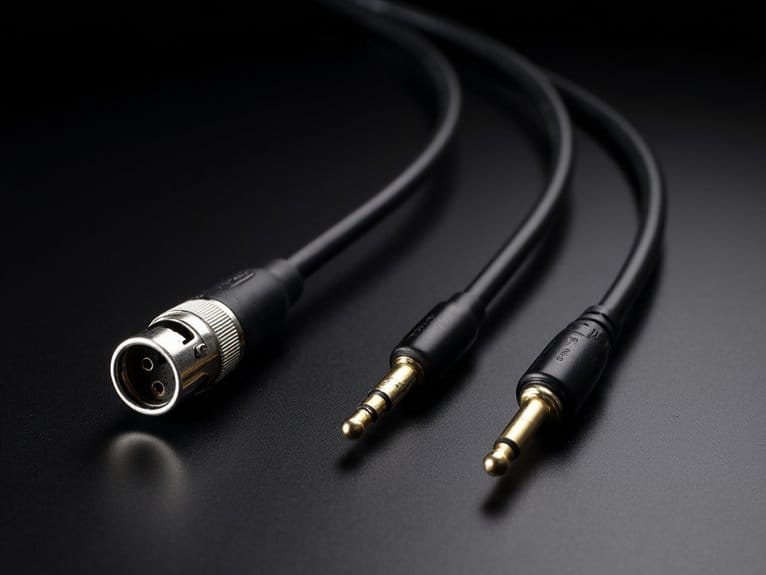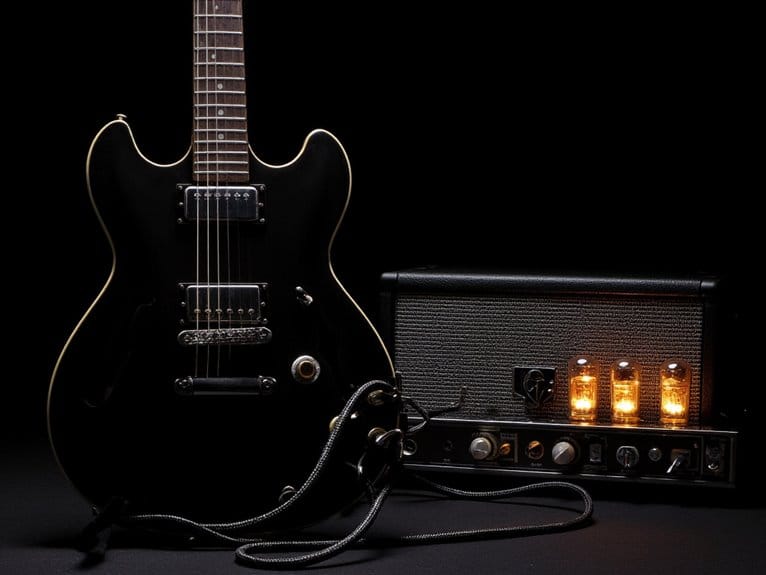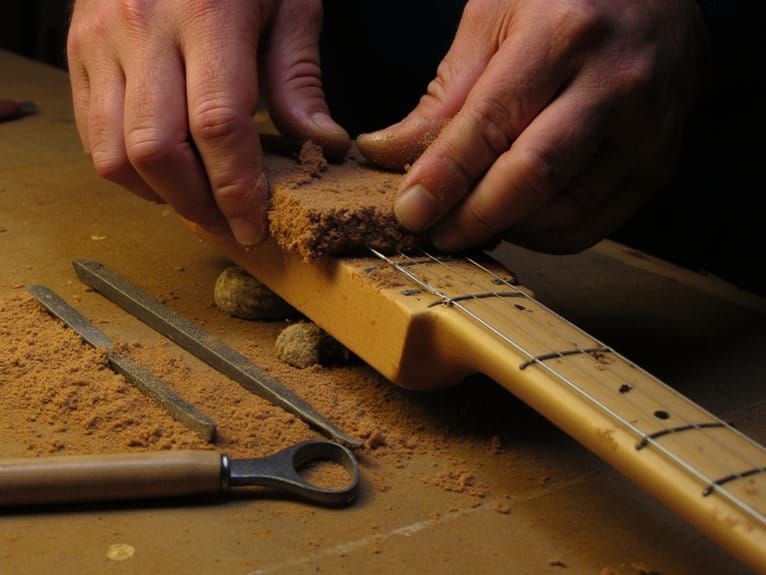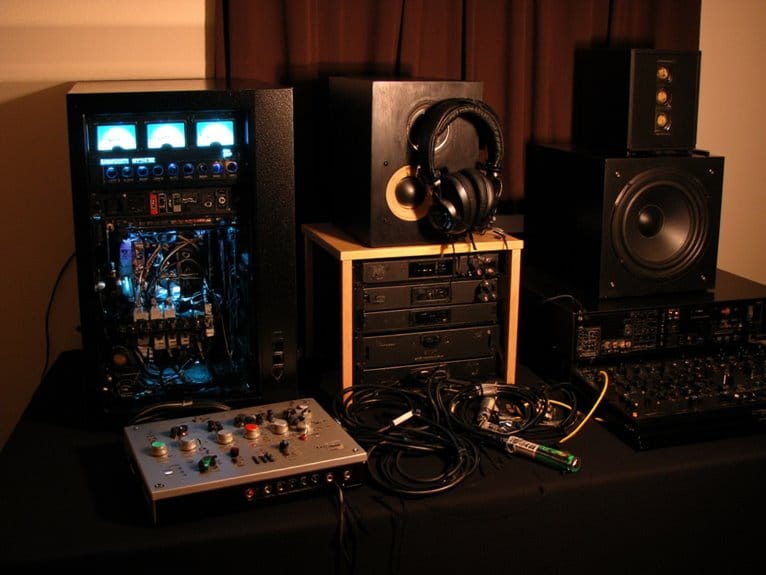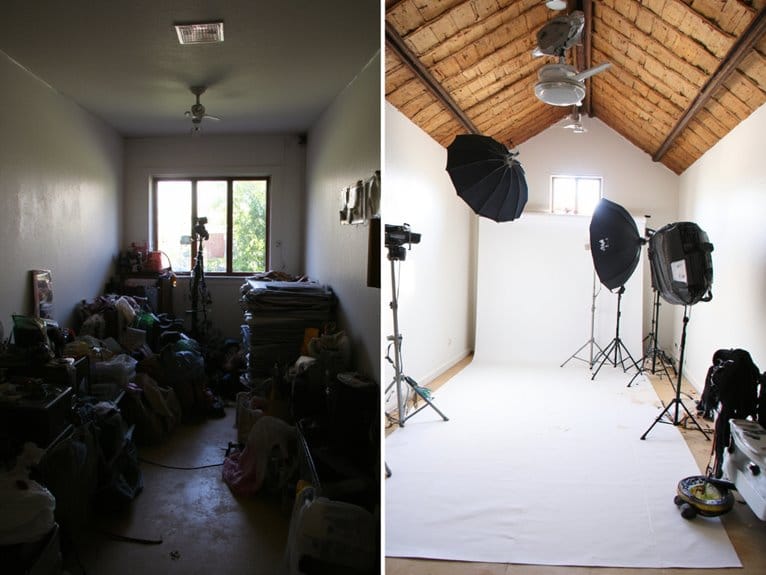Mid/Side Processing: Stereo Width Control
You’ll gain precise stereo width control through mid/side processing by manipulating the side channel, which contains the differences between left and right channels while the mid channel holds centered elements like vocals and bass. Boosting the side channel widens your stereo image for immersive soundscapes, while reducing it by -10 dB creates focused, mono-compatible mixes. This technique requires careful monitoring with vectorscopes and correlation meters to maintain phase coherence and prevent cancellation issues that compromise translation across playback systems.
We are supported by our audience. When you purchase through links on our site, we may earn an affiliate commission, at no extra cost for you. Learn more.
Notable Insights
- Mid/side processing separates audio into centered elements (mid) and stereo differences (side) for independent control.
- Adjusting side channel gain directly controls stereo width – increase for wider imaging, decrease for narrower focus.
- Reducing side gain by -10 dB typically provides effective balance while maintaining mono compatibility.
- Boosting side channels around 10-15 kHz enhances airiness and spatial width without adding harshness.
- Monitor phase relationships carefully as excessive side processing can cause mono playback cancellation issues.
Understanding Mid and Side Channel Components
While most audio engineers work exclusively with traditional left and right stereo channels, I’ve found that understanding mid/side processing opens up a completely different approach to mixing and mastering that can dramatically improve your control over stereo imaging.
The mid channel characteristics include everything that’s common to both left and right channels-think vocals, bass, kick drums, and other centered elements that form your mix’s foundation.
The mid channel captures your mix’s centered foundation-vocals, bass, and kick drums that anchor everything together.
Meanwhile, side channel contents consist primarily of the differences between left and right, capturing reverb, ambient sounds, and panned instruments that create your stereo width.
This mathematical relationship, where mid equals L+R and side equals L-R, gives you independent control over your mix’s focus versus its spatial dimension.
Controlling Stereo Width Through Side Channel Adjustment
Once you’ve grasped the fundamental relationship between mid and side channels, the real magic happens when you start adjusting the side channel’s gain to control your mix’s stereo width. Increasing the side channel level enhances stereo separation by amplifying differences between left and right channels, creating a broader soundscape that feels more immersive.
Conversely, reducing side gain narrows your stereo image, pulling elements toward center for a more focused presentation. I’ve found that -10 dB attenuation often provides an effective balance between width and mono compatibility, though your mileage may vary depending on source material.
These side channel adjustments require careful monitoring since excessive levels can introduce phase problems, unbalanced panning effects, or cause important elements to disappear when your mix gets summed to mono.
Essential EQ Techniques for Mid/Side Processing
The precision of a surgeon’s scalpel becomes your guiding principle when applying EQ within mid/side processing, where every frequency adjustment affects both stereo width and tonal balance in ways that traditional stereo EQ simply can’t match.
EQ Precision reaches new heights when you’re independently shaping center elements versus stereo components, creating opportunities for surgical adjustments that maintain clarity while enhancing spatial characteristics.
Here’s how I approach essential mid/side EQ techniques:
- Cut muddy frequencies (200-500 Hz) in the mid channel to eliminate boxiness without sacrificing stereo width
- Boost side channels (10-15 kHz) for enhanced airiness and perceived openness without harsh sibilance
- Apply multi-band processing to control different frequency ranges independently, maintaining tight bass while widening highs
- Automate EQ parameters dynamically to adapt Frequency Balance throughout different song sections, preventing masking between competing elements
Professional rack mount digital mixers often provide the hardware foundation needed for implementing these mid/side EQ techniques with their high-quality preamps and comprehensive routing capabilities.
Phase Relationships and Mono Compatibility Considerations
Because mid/side processing primarily alters how left and right channels relate to each other, you’re fundamentally performing surgery on the phase relationships that create your stereo image.
Honestly, it’s easier to mess this up than most engineers care to admit. When you boost the side channel to widen your mix, you’re increasing the level of phase-inverted information that can cause serious cancellation issues when summed to mono.
I’ve watched countless mixes sound impressive in stereo only to fall apart completely on phone speakers or club systems. Maintaining phase coherence between your left and right channels becomes critical here, because any processing differences between mid and side channels can introduce phase shifts that destroy stereo imaging and create mono compatibility nightmares.
Visualization Tools and Metering for Optimal Stereo Balance
Given how easily phase relationships can derail your carefully crafted mix, you’ll need reliable visual feedback to navigate stereo processing safely, and that’s where vectorscopes and correlation meters become your best friends in the studio.
Modern stereo imaging plugins integrate these visualization tools directly into their interfaces, giving you real-time feedback on your M/S adjustments.
Here’s what I rely on:
- Vectorscopes – Plot your stereo signal in 2D space, showing left-right balance and phase relationships instantly
- Correlation meters – Display values near +1 for good mono compatibility, warning when approaching -1 territory
- M/S level meters – Monitor mid and side signal balance separately for precise width control
- Phase scopes – Detect cancellation issues before they compromise your mix’s mono translation
This visual feedback eliminates guesswork when pushing stereo boundaries.
On a final note
You’ve now got the essential tools to shape your stereo field with confidence, from basic width adjustments to advanced EQ techniques that’ll keep your mixes punchy yet spatially engaging. Remember, I’ve learned through countless mix revisions that subtle changes often yield the most musical results, so don’t overdo the side channel processing. Trust your ears, check mono compatibility religiously, and you’ll create mixes that translate beautifully across all playback systems.

